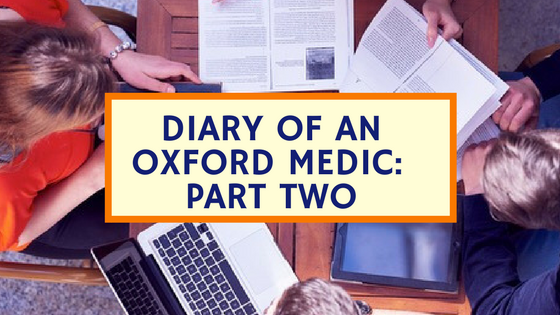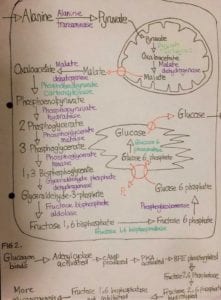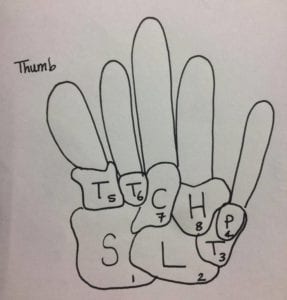
So, three real weeks in and learning is well underway. In first year we have three large modules: physiology and pharmacology, biochemistry and molecular genetics, and organisation of the body as well as one small unit on population health and medical sociology. In this post I’m going to talk about the two main forms of work that we get set during the week at Oxford.
Oxford University Medical School: Essays
Essays are probably the big difference between Oxford University medical school and others. When I started, I thought that “essay” was an exaggeration and it was just going to be a piece of writing describing a biological process – basically a long version of a A-Level 9 marker.
And it can be if you want to, but as the tutors have told us again and again (and agaaaain!), to get the top marks you have to include more than just description. For example, if the question is about the role of gluconeogenesis in starvation then as well as describing the enzyme pathway and what the enzymes do, you should also include experimental evidence (how was this mechanism hypothesised, and what further tests were done to prove it) and clinical relevance (what diseases are caused by some of these enzymes being mutated, what symptoms do the diseases cause and why, is there a treatment and how does it work).
This should mean referencing the ‘landmark studies’ which first involves finding what they are, and then understanding what they did, and why it matters. Basically, it is like doing a short EPQ in around 6 hours, 3 to 4 times a week.
Oxford University Medical School: Diagrams

It is also important to learn what works for you. For example in biochem essays I cannot overemphasise the importance of diagrams. One diagram can summarise an enzyme pathway that would take several paragraphs to explain in what would essentially be a list of substrates, enzymes, and products.
This not only makes the tutor love you but also makes it much easier to remember in the long run, which is the point of these essays – something it is very easy to forget when you have so many building up and slip into a ‘just get them done’ mentality.
For example, I’ve attached the diagram that accompanied my gluconeogenesis essay. In case you’re interested, the purple arrows represent reversible reactions whereas the green arrows are irreversible reactions. The significance of irreversible reactions in metabolic pathways are that they are usually points of control.
Oxford University Medical School: Worksheets
Tutors will normally set you essays except for anatomy tutorials where you do worksheets that help you learn the anatomy of the body. These classes are intense since there are just so many names: you not only need to learn the bones but also the names of the major protrusions and indentations since they normally correspond to important joints or muscle attachment sites.
However, I must say that reciting the names while standing around a skeleton does make me feel like a real medical student (something I still can’t quite believe is true)! As well as learning from skeletons we also do living anatomy where we feel the bones on ourselves. This is important as it teaches us how the normal skeleton should look and feel, helping us to diagnose fractures or breakages on other people so we can take appropriate steps before imaging them.
Fun fact!

The common way to learn the carpal bones of the hands is with the mneumonic Some Lovers Try Positions That They Cannot Handle: (Scaphoid, Lunate, Triquitrum, Pisiform, Trapezium, Trapezoid, Hamate).
This works if you go laterally to medially (from thumb to pinkie because the thumb is further from the midline of the body) and proximally then distally (the bottom row first because that is closer (in greater proximity to) the body).
Words: Irene Mathias
